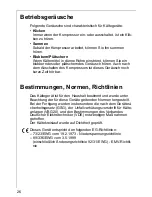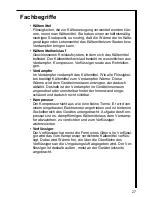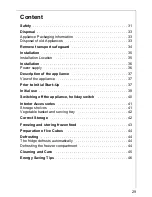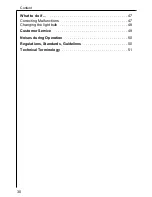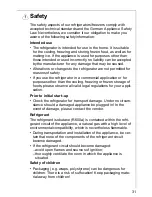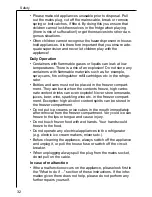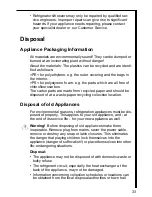
Initial use
39
The following effects are of significance in respect of the interior
temperature:
– Ambient temperature;
– Quantity and temperature of the food stored;
– Frequency with which the door is opened and how long it is left
open.
The following temperature settings can therefore only be consi-
dered as recommendations that may well need to be adapted to
suit your particular situation.
Recommended settings:
a) For normal refrigeration without using the freezer compart-
ment:
– Position "1" to "2";
– If lower temperatures are required, position "2" to "3".
b) When frozen foods are stored in the freezer compartment or
fresh food is to be frozen, a temperature setting of between "2"
and "4" should be selected, depending on the ambient tempe-
rature.
Note: At the setting given under b) the fridge has an average
temperature of approx. +5 °C; the average temperature in the
freezer compartment is then approx. –18 °C or colder. These
figures apply at ambient temperatures from +16 °C to +32 °C.
At higher ambient temperatures, fresh food is properly frozen
with the regulator set to "2" to "3", without the fridge becoming
too cold.
0
Turn the temperature regulator to the desired setting with the aid
of a coin.
The compressor starts and then runs automatically.
Important!
High ambient temperatures (e.g. on hot summer days) and a
cold setting on the temperature regulator (position"3" to "4") can
cause the compressor to run continuously.
Reason: when the ambient temperature is high, the compressor
must run continuously to maintain the low temperature in the
appliance. The fridge will not be able to defrost since automatic
defrosting of the fridge is only possible when the compressor is
not running (see also "Defrosting" section). The result is the
build up of a thick layer of frost on the fridge rear wall.


